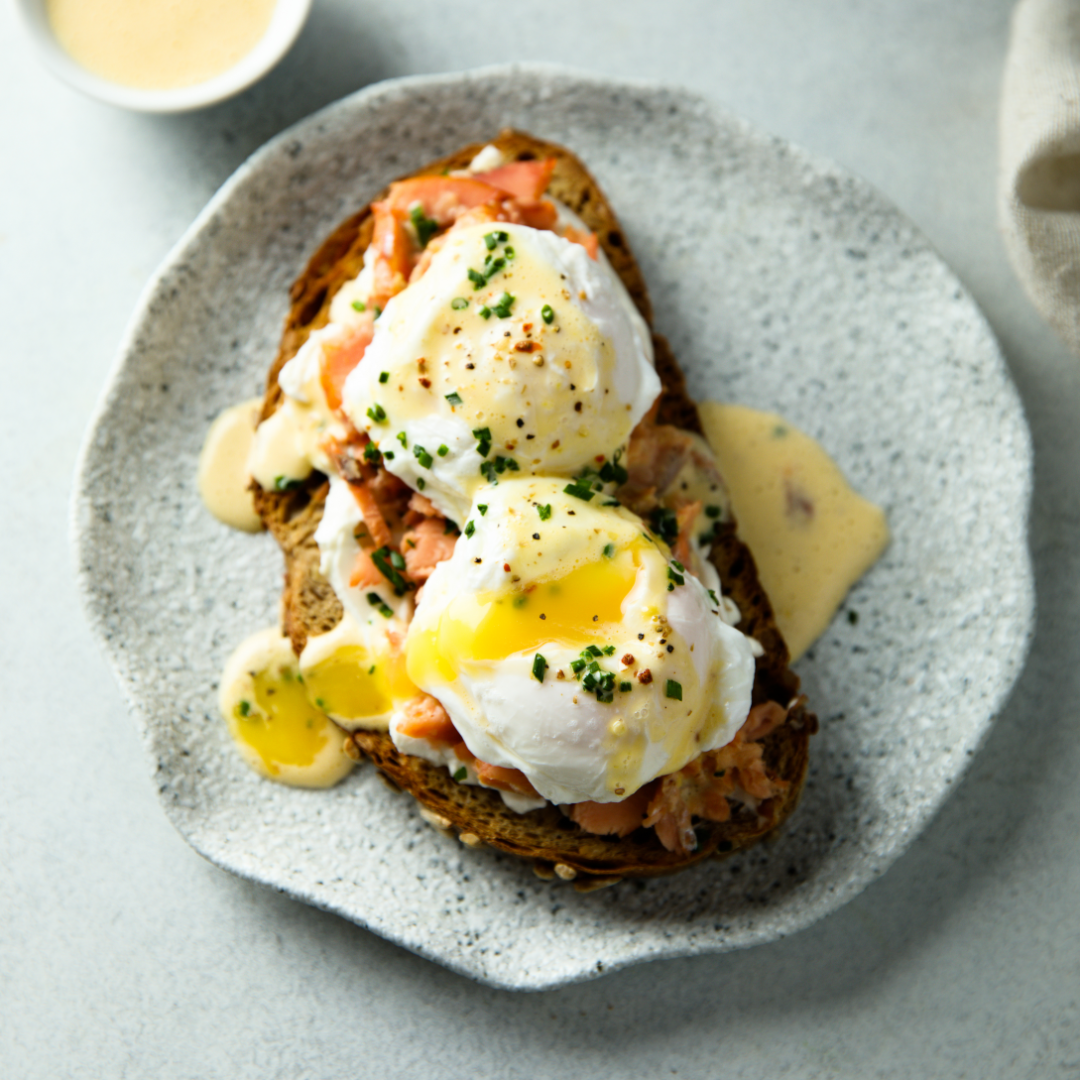For the Eggs Benedict:
- 4 large eggs (preferably organic and pasture-raised)
- 2 English muffins (you can also use gluten-free muffins if preferred)
- 4 slices of Canadian bacon (or substitute with ham or thick-cut bacon)
- 2 tbsp beef tallow (for cooking)
- Freshly ground black pepper, to taste
- Fresh parsley or chives (optional, for garnish)
- 3 large egg yolks (preferably room temperature)
- 1/2 cup (1 stick) grass-fed butter, melted (or ghee for a dairy-free option)
- 1 tbsp lemon juice (freshly squeezed)
- 1 tsp Dijon mustard (optional)
- Salt, to taste
- Freshly ground black pepper, to taste
- A pinch of cayenne pepper or smoked paprika (optional, for extra flavor)
1. Prepare the Hollandaise Sauce:
- In a heatproof bowl, whisk together the egg yolks and lemon juice. You can also add Dijon mustard if you prefer a bit of tanginess.
- Fill a small saucepan with about 1 inch of water and bring it to a simmer over medium heat (you’ll use this to create a double boiler).
- Place the bowl with the egg yolk mixture over the simmering water, making sure the bottom of the bowl does not touch the water (this prevents the eggs from scrambling).
- Whisk constantly as the egg yolks warm up. Slowly add the melted butter to the egg yolk mixture in a thin stream while continuing to whisk. This will help emulsify the sauce and create a creamy consistency.
- Once the butter is fully incorporated, whisk in a pinch of salt, black pepper, and cayenne pepper (if using).
- Taste the sauce and adjust the seasoning with more lemon juice, salt, or pepper if needed.
- Keep the sauce warm over the simmering water while you prepare the rest of the Eggs Benedict. Stir occasionally to prevent it from thickening too much.
- In a large skillet, heat 1 tablespoon of beef tallow over medium heat. Add the Canadian bacon slices and cook for about 2-3 minutes per side, or until they are nicely browned and heated through.
- Once cooked, set the bacon aside and cover to keep warm.
- Cut the English muffins in half and toast them. You can toast them in a toaster or in a skillet with a little beef tallow for extra flavor. If you prefer, you can grill the muffin halves on a dry skillet or in the oven at 375°F (190°C) for about 5-7 minutes, or until they are golden and crispy.
- Fill a saucepan with about 3 inches of water and add a teaspoon of vinegar (this helps the egg whites set quickly). Bring the water to a gentle simmer over medium heat.
- Crack each egg into a small bowl or ramekin.
- Create a gentle whirlpool in the water by stirring it with a spoon. Then, carefully slide the egg into the simmering water. This will help the egg whites wrap around the yolk for a neater poached egg.
- Poach the eggs for 3-4 minutes, or until the whites are set but the yolks are still runny.
- Using a slotted spoon, gently lift the eggs out of the water and place them on a plate lined with a paper towel to absorb any excess water.
- Place one toasted English muffin half on each plate.
- Top with a slice of Canadian bacon.
- Gently place a poached egg on top of the bacon.
- Spoon the hollandaise sauce over the poached eggs, generously covering each one.
- Garnish with freshly cracked black pepper and chopped parsley or chives if desired.
- Serve the Eggs Benedict immediately while warm. You can pair it with sautéed greens or a side salad for a well-rounded meal.
- Egg freshness: Fresh eggs are key for perfect poached eggs. They hold their shape better in the water, leading to cleaner and more uniform poaching.
- Hollandaise consistency: If the hollandaise gets too thick while you’re making it, you can thin it out by whisking in a teaspoon or two of warm water or more lemon juice.
- Make-ahead: The hollandaise sauce can be made ahead and kept warm in a double boiler, but I recommend making the rest of the components fresh for the best texture and flavor.
This seed oil-free Eggs Benedict is a rich and indulgent meal, made healthier by using beef tallow for cooking and grass-fed butter in the hollandaise. It’s perfect for a special brunch or a satisfying breakfast!

